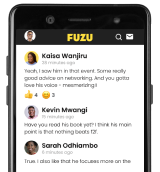5 helpful presentation tips. Discover how I learned to do presentations to a group and overcome presentation anxiety.
Photo credit: Plavalaguna
I never used to enjoy doing presentations at work. As soon as I started doing these 5 things, my presentation skills dramatically improved. I used to dread doing presentations at work. It felt like an exam where you had to remember information and recite it back perfectly. I still get nervous on stage, but now I actually enjoy presenting.
Once I was able to overcome my fear and present better, other people started paying attention to me more. My ideas were being heard and people wanted to talk to me after meetings were over.
1. I practice well in advance
This is why it's important to practice well in advance. When you're delivering a presentation, you want it to flow smoothly, so you'll want to rehearse as much as possible. You may not need to get the whole presentation down — an outline will work for many types of presentations. But practice talking through each slide and having a basic introduction before you actually need it.
You should also practice handing out the presentation and providing feedback afterward so you know what works and what needs improvement. In a professional environment, some people will ask for a copy of your presentation so they can refer to it later.
You'll probably want to go over your next presentation with your colleagues or boss at least once before giving it because personalizing presentations based on the audience is key to making them successful.
2. I looked at examples of the type of presentation I was going to deliver
People are extraordinarily sensitive to tone when they're doing a presentation. If you come across as too serious, you'll kill your audience's interest and make them less likely to pay attention to your message.
The first thing I do when I'm preparing for a talk is to look at examples of the type of presentation I'm going to be delivering. The second thing I do is make sure my slides are well organized and that I have all the right graphics.
If you have a tendency to get distracted, don't try to power through it and give a half-baked presentation — it will come across as unprofessional.
3. I practice in front of a group of people (or even just one other person)
This is kind of an obvious one, but it's so important that I have to repeat it. Practicing your presentation in front of a group of people will improve your delivery and give you plenty of opportunities to practice in different situations. It's also fun to get some feedback from people who aren't involved in what you're presenting.
To practice, set up a small presentation (like a short speech) in front of a single person or in front of a group. Talk through your main points and how they relate to each other. Then get feedback from the other person or group on how they feel the message or presentation was delivered.
I'm not saying you need to do this every time you present, but I am saying that it's essential; don't just wing it when you're presenting to a group. The best way to do this is by practicing at least twice before you go out in public!
4. I used visual aids such as slides and/or handouts
When you're trying to sell an idea or a product, it can be tough to get through. For years, I would struggle with my own presentations, as they seemed to drag on endlessly. As I continued to practice, I noticed that my presentations came together much easier and were more compelling when I wasn't trying to be a speaker.
The key to a great presentation is simple: Use visuals. While the visuals themselves don't make the presentation great, they help you convey your ideas more effectively. The more clear and concise you are in your written copy (the more text you use, the better), the less need for visuals.
5. I used my full name and job title when introducing myself to people.
People want to be recognized and remembered, so when you make them remember your name, they tend to like you more. The same goes for your title. If you're the VP of Sales, don't introduce yourself with "My name is John." Say something like, "I'm John, the Vice President of Sales."
In conclusion
Most of my newfound success with presenting at work has come from doing more preparation and taking advantage of the forethought I’ve put into every topic I give and talk about. That, along with a general attitude adjustment for when things go wrong, have made me a much stronger presenter. Hopefully, these ideas and strategies will help you present better at work too.
You might also like this: 5 Tips on How to Prepare for a Performance Review

